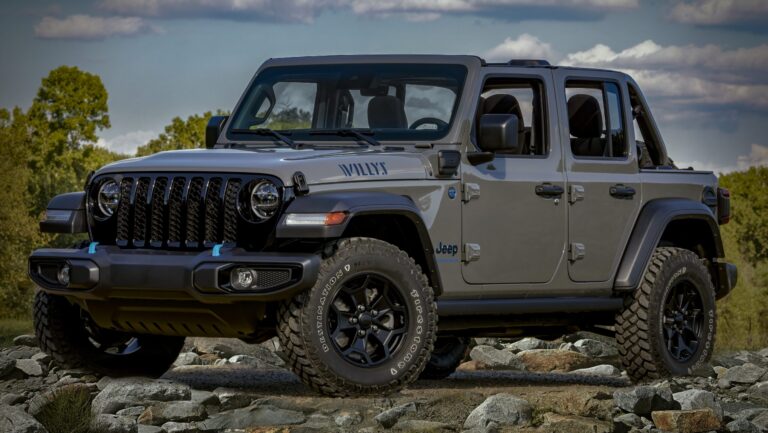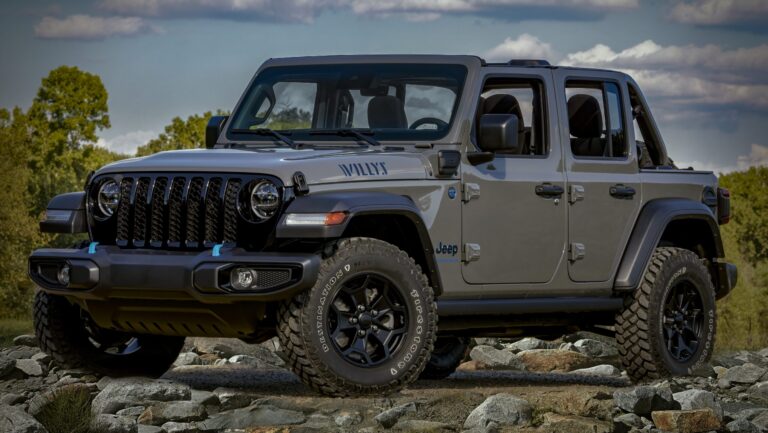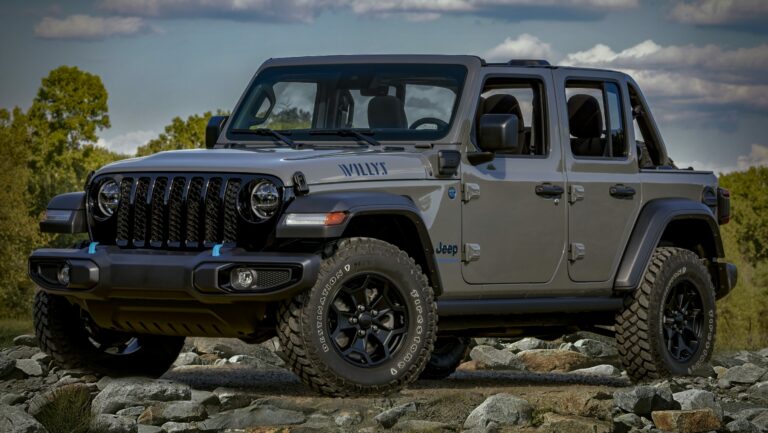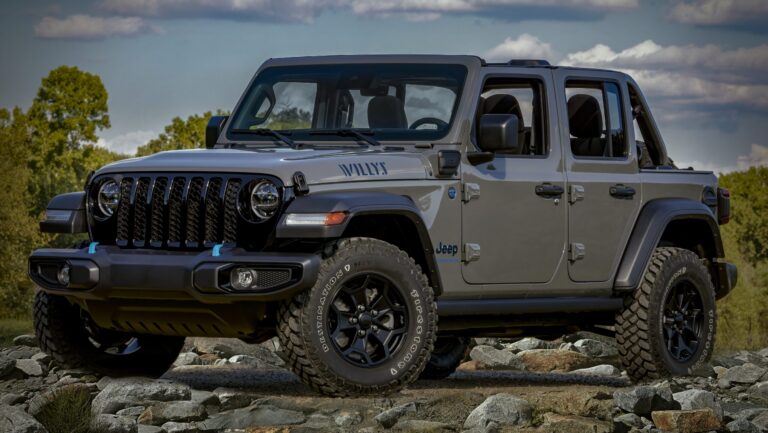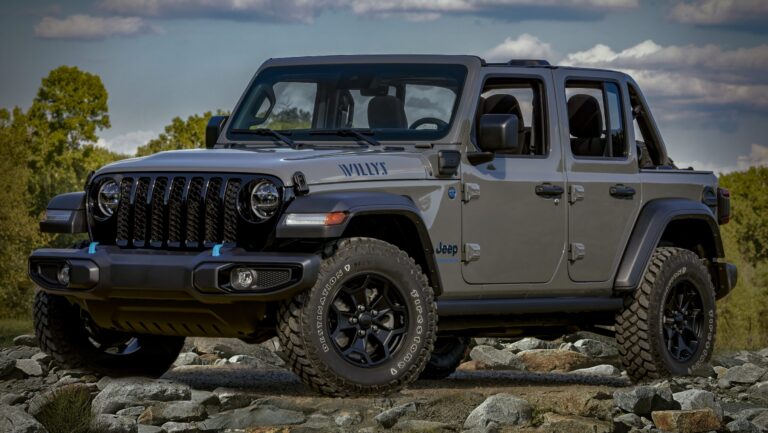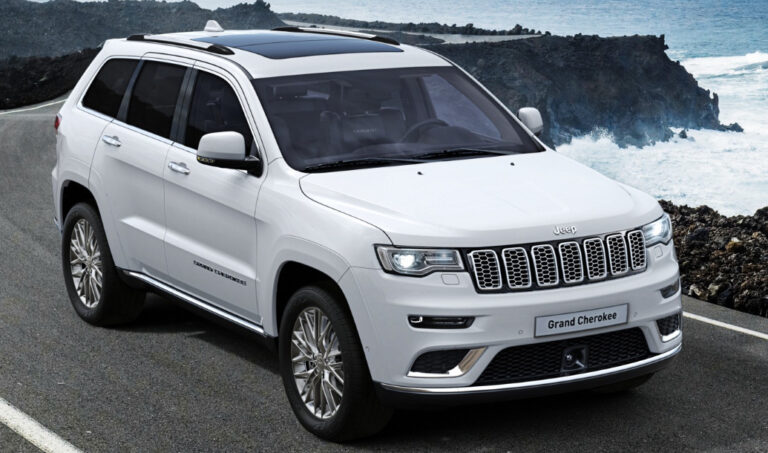2001 Jeep Cherokee Lifted For Sale: Your Ultimate Guide to an Off-Road Legend
2001 Jeep Cherokee Lifted For Sale: Your Ultimate Guide to an Off-Road Legend /jeeps.truckstrend.com
The year 2001 marked the final production year for one of the most iconic and beloved SUVs ever built: the Jeep Cherokee XJ. Renowned for its unibody construction, robust powertrain, and unparalleled off-road prowess, the XJ has achieved legendary status among enthusiasts. When you encounter a "2001 Jeep Cherokee Lifted For Sale," you’re not just looking at a used vehicle; you’re looking at a piece of automotive history, a highly capable machine, and a canvas for adventure. This article serves as your comprehensive guide to understanding, evaluating, and ultimately acquiring one of these sought-after off-road warriors.
The Enduring Appeal of the Jeep Cherokee XJ (2001 Model Year)
2001 Jeep Cherokee Lifted For Sale: Your Ultimate Guide to an Off-Road Legend
The Jeep Cherokee XJ, produced from 1984 to 2001, is often lauded as the perfect balance of size, capability, and simplicity. Its unibody design, revolutionary for its time, offered a lighter yet rigid structure that contributed to both its on-road manners and off-road agility. The 2001 model year, in particular, benefits from years of refinement, offering the reliable 4.0-liter inline-six engine (widely regarded as one of the most durable engines ever made), a sturdy automatic (AW4) or manual (NV3550) transmission, and the choice of the Command-Trac (NP231) or Selec-Trac (NP242) transfer cases.
What makes the 2001 XJ so special, especially when lifted, is its inherent adaptability. Its compact dimensions make it highly maneuverable on tight trails, while its solid axles (Dana 30 front, Chrysler 8.25 or Dana 35 rear) provide excellent articulation and durability. For many, the XJ represents the quintessential Jeep experience: rugged, dependable, and endlessly customizable. A lifted XJ enhances these attributes, transforming an already capable vehicle into an off-road beast ready to conquer even more challenging terrain.
Understanding the "Lifted" Aspect
When a 2001 Jeep Cherokee is described as "lifted," it primarily refers to modifications made to its suspension system to increase its ground clearance. This enhancement serves several crucial purposes:
- Increased Ground Clearance: Allows the vehicle to clear obstacles like rocks, logs, and deep ruts without damaging its underside components.
- Larger Tires: A lift kit provides the necessary fender clearance to accommodate larger, more aggressive off-road tires, which improve traction and further increase ground clearance.
- Improved Approach, Departure, and Breakover Angles: These angles dictate how steep an obstacle the vehicle can approach, climb over, and descend without scraping. A lift significantly improves them.
- Aesthetics: Let’s be honest, a lifted XJ looks undeniably tougher and more capable, giving it a distinctive and aggressive stance.

Lift kits for the XJ typically involve replacing or modifying the coil springs (front) and leaf springs (rear), along with longer shocks, control arms, and sometimes track bars. Common lift heights range from 2 inches for a mild improvement to 6 inches or more for extreme off-roading. The quality and type of lift kit used (e.g., basic coil spacers vs. full long-arm suspension systems) significantly impact ride quality, articulation, and overall performance.
Key Considerations When Buying a Lifted 2001 Jeep Cherokee
Purchasing a lifted vehicle requires a more thorough inspection than buying a stock one, as modifications can introduce new variables. Here’s what to scrutinize:

-
Mechanical Condition (Beyond the Lift):
- Engine (4.0L I6): Check for oil leaks (especially rear main seal), coolant leaks, signs of overheating, and unusual noises. Listen for the "death rattle" from worn piston skirts (common but not always critical).
- Transmission (AW4 Automatic): Ensure smooth shifts, both up and down, and check fluid condition.
- Transfer Case (NP231/NP242): Test 2WD, 4WD High, and 4WD Low. Listen for grinding or clunking.
- Axles (Dana 30 front, Chrysler 8.25/Dana 35 rear): Inspect for leaks, bent tubes, and excessive play in the differential.
- Frame & Unibody: Critical for the XJ. Look for rust, cracks, or damage, especially around suspension mounting points, rocker panels, and floorboards.

-
Lift Kit Quality & Installation:
- Components: Are they from reputable brands (e.g., Old Man Emu, Rough Country, Teraflex, Rubicon Express)? Are all necessary components present (shocks, springs, control arms, track bar, brake lines)?
- Installation: Was it professionally installed, or a DIY job? Look for loose bolts, improper torquing, or signs of poor workmanship.
- Driveline Angles: With a lift, the driveshaft angles change. Look for signs of driveline vibration (common with lifts over 3 inches) which might indicate the need for a Slip Yoke Eliminator (SYE) and custom driveshaft.
-
Steering & Suspension Components:
- Ball Joints & Tie Rod Ends: Check for play. Lifted Jeeps put more stress on these components.
- Bushings: Inspect all bushings (control arm, leaf spring, sway bar) for cracks, wear, or dry rot.
- Steering Box & Linkage: Look for leaks or excessive play in the steering wheel.
-
Tire Size & Gearing:
- Tires: Are they in good condition with even wear? Larger tires without proper gearing will significantly reduce acceleration and fuel economy. Ideally, the owner should have re-geared the axles to match the larger tires.
-
Rust and Body Condition:
- XJs are prone to rust, especially in colder climates. Thoroughly inspect the frame rails, rocker panels, floorboards, and fender wells.
- Check for body damage, especially on the underside, which might indicate hard off-road use.
-
Documentation:
- Ask for service records, receipts for the lift kit, and any other modifications. This provides insight into the vehicle’s history and how well it was maintained.
The Benefits of Owning a Lifted 2001 Jeep Cherokee
Despite the due diligence required, the rewards of owning a lifted 2001 XJ are substantial:
- Unmatched Off-Road Capability: A properly built lifted XJ can tackle trails that many modern SUVs can only dream of. Its compact size and solid axles make it an agile rock crawler and trail explorer.
- Distinctive Presence: Standing tall on aggressive tires, a lifted XJ turns heads and broadcasts an adventurous spirit.
- Reliability: The 4.0L engine is legendary for its longevity, often exceeding 200,000 or even 300,000 miles with proper maintenance.
- Strong Aftermarket Support: The XJ has one of the most extensive aftermarket parts catalogs of any vehicle, meaning parts are readily available, and modifications are endless.
- Community: Owning an XJ connects you to a passionate and supportive community of fellow enthusiasts who share knowledge, tips, and trail experiences.
- Versatility: While primarily an off-road machine, a well-tuned lifted XJ can still serve as a capable daily driver, though fuel economy will be a factor.
Where to Find a Lifted 2001 Jeep Cherokee For Sale
Finding the right lifted XJ requires patience and knowing where to look:
- Online Marketplaces: Craigslist, Facebook Marketplace, and eBay Motors are primary sources. Use specific search terms like "lifted XJ," "Jeep Cherokee 4×4 lifted," or "2001 Cherokee off-road."
- Specialized Forums & Enthusiast Groups: Websites like NAXJA (North American XJ Association) and various Jeep Cherokee forums often have "for sale" sections. Facebook groups dedicated to XJ owners are also excellent resources.
- Local 4×4 Shops: Sometimes, off-road specialty shops might have modified vehicles for sale or know of owners looking to sell.
- Word of Mouth: Let friends, family, and local off-roaders know you’re in the market.
When searching, be prepared to travel for the right vehicle, as highly modified or well-maintained examples can be scarce in some areas.
What to Expect During the Inspection and Test Drive
Always perform a thorough inspection and test drive:
- Visual Inspection (Walk-around): Check the exterior for rust, body damage, and paint condition. Look at tire wear (uneven wear can indicate alignment issues). Inspect the lift kit components for signs of wear or damage.
- Underneath Inspection: Get under the vehicle. Look for fluid leaks (engine, transmission, transfer case, axles). Inspect the frame rails, floorboards, and rocker panels for rust or damage. Check all suspension components (shocks, springs, control arms, bushings) for wear, cracks, or loose fasteners.
- Engine Bay: Check fluid levels, belts, hoses. Look for signs of previous repairs or modifications.
- Interior: Check seats, carpet, headliner, and all electrical components (windows, locks, HVAC, radio).
- Test Drive:
- Start the engine cold and listen for any unusual noises.
- Drive at various speeds, paying attention to acceleration, braking, and steering.
- Listen for driveline vibrations, clunks, or hums.
- Test 4WD High and 4WD Low, ensuring they engage smoothly.
- Check for proper alignment (does it pull to one side?).
- Test the brakes for effectiveness and any pulling.
Don’t hesitate to ask the seller questions about the vehicle’s history, its off-road use, and details about the modifications.
Practical Advice and Actionable Insights
- Pre-Purchase Inspection (PPI): If you’re serious about a vehicle, invest in a PPI by an independent mechanic who specializes in Jeeps or off-road vehicles. They can identify issues you might miss.
- Budget Beyond the Purchase Price: Factor in potential immediate maintenance (fluid changes, tune-up), potential repairs, and future upgrades (e.g., a winch, better lighting, or even re-gearing if the current setup is not optimal).
- Understand Local Laws: Be aware of your local regulations regarding vehicle lift height, tire coverage, and bumper heights.
- Negotiate: Based on your inspection findings and market research, don’t be afraid to negotiate the price.
Pricing Guide: 2001 Jeep Cherokee Lifted For Sale
The price of a lifted 2001 Jeep Cherokee can vary dramatically based on its condition, mileage, the quality and extent of modifications, and geographical location. This table provides a general range:
| Factor/Category | Low End (Rough Condition/Basic Lift) | Mid-Range (Good Condition/Moderate Lift) | High End (Excellent/Heavily Modded) | Notes |
|---|---|---|---|---|
| Price Range (USD) | $4,000 – $7,000 | $7,000 – $12,000 | $12,000 – $20,000+ | Prices fluctuate based on market demand, location, and specific build details. |
| Mileage | 180,000+ | 120,000 – 180,000 | Under 120,000 | Lower mileage often correlates with higher prices, assuming maintenance. |
| Engine Condition | Runs, but may have minor issues/leaks | Runs well, minor cosmetic issues | Strong, well-maintained, no major issues | 4.0L I6 is robust; check for service history. |
| Transmission | Functional but may have delays | Smooth shifts, no major concerns | Flawless operation | Check fluid color and smell. |
| Lift Kit Type | Budget spacers, basic full spring | Reputable full spring, some long arm | Premium long arm, high-end components | Quality of components significantly impacts ride and off-road performance. |
| Lift Height | 2-3 inches | 3-4.5 inches | 4.5+ inches | Taller lifts often necessitate more expensive accompanying mods (SYE, upgraded steering). |
| Tire Condition | Worn/Old, mismatched | Decent tread, matching set | New/Aggressive M/T or A/T | New tires are a significant expense; factor into budget. |
| Rust Level | Moderate to Significant (frame/body) | Minor surface rust, manageable | Minimal to None (esp. Southern states) | Critical for structural integrity and longevity. |
| Aftermarket Mods | Basic (aftermarket bumpers, lights) | Moderate (winch, rock sliders, upgraded lighting) | Extensive (axle upgrades, armor, roof rack, etc.) | Well-chosen modifications add value; assess quality and purpose. |
| Interior Condition | Fair (tears, stains, broken plastics) | Good (minor wear, all functional) | Excellent (clean, all functional) | Impacts comfort and daily usability. |
Frequently Asked Questions (FAQ)
Q1: Is a lifted 2001 Jeep Cherokee a good daily driver?
A1: It can be, but it depends on the lift height and components. A mild 2-3 inch lift with quality components can still offer a comfortable ride. Taller lifts with aggressive tires will be louder, less fuel-efficient, and might require more steering input on the highway.
Q2: What are common problems with the 2001 XJ?
A2: Common issues include rust (especially in the unibody and rocker panels), oil leaks (rear main seal), cooling system issues (water pump, radiator), saggy leaf springs, and occasional sensor failures (Crank Position Sensor is famous).
Q3: How much does it cost to maintain a lifted XJ?
A3: Maintenance costs can be slightly higher than a stock XJ due to increased wear on certain components (ball joints, U-joints) and the cost of larger tires. However, parts are generally affordable and readily available, and the 4.0L engine is known for its reliability.
Q4: What’s the best lift height for an XJ?
A4: For most users, a 3-4.5 inch lift offers an excellent balance of capability, ride quality, and cost-effectiveness without requiring extensive additional modifications like an SYE (though it’s still recommended for 4.5+ inches).
Q5: Do I need a Slip Yoke Eliminator (SYE) with a lift?
A5: For lifts of 3 inches or more, an SYE is highly recommended. It helps correct driveline angles, reduces vibrations, and prevents potential damage to the transfer case output shaft, especially when articulating off-road.
Q6: What’s the fuel economy like on a lifted 2001 XJ?
A6: Expect around 12-16 MPG, depending on tire size, gearing, lift height, and driving style. It will be lower than a stock XJ.
Q7: Can I take it off-road immediately after buying?
A7: It’s advisable to thoroughly inspect the vehicle, perform essential maintenance (fluid changes, tune-up), and ensure the lift components are properly installed and torqued before hitting the trails. Familiarize yourself with its capabilities in a controlled environment first.
Conclusion
The 2001 Jeep Cherokee XJ, especially a well-chosen lifted example, represents an incredible opportunity to own a highly capable, iconic, and endlessly fun off-road vehicle. While the process of finding and evaluating one requires diligence and a keen eye for detail, the reward is a vehicle that can take you places most others can’t. With its legendary 4.0L engine, robust unibody, and immense aftermarket support, a lifted 2001 XJ isn’t just a car; it’s a lifestyle, an adventure waiting to happen, and a testament to the enduring spirit of the Jeep brand. Do your homework, find the right one, and prepare to join the ranks of passionate XJ owners who know that true capability never goes out of style.


